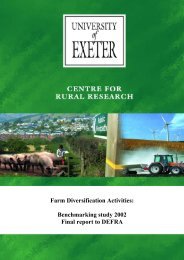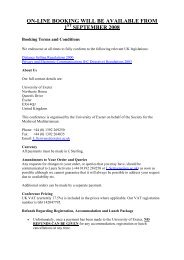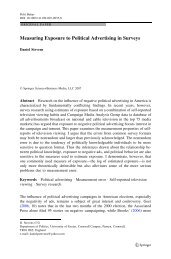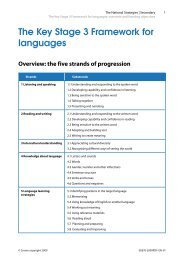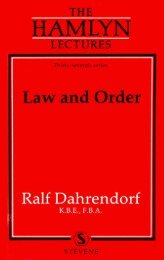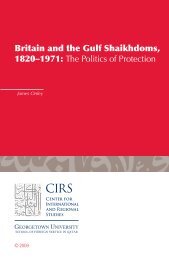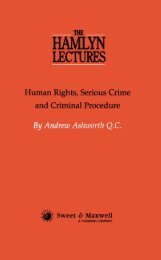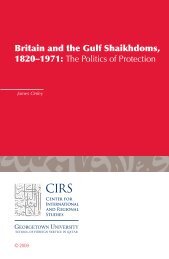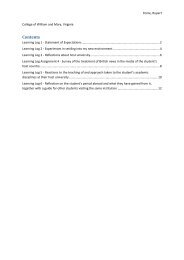Blackstone's Tower: The English Law School - College of Social ...
Blackstone's Tower: The English Law School - College of Social ...
Blackstone's Tower: The English Law School - College of Social ...
You also want an ePaper? Increase the reach of your titles
YUMPU automatically turns print PDFs into web optimized ePapers that Google loves.
<strong>The</strong> Quest For a Core<br />
For example, when we have masses <strong>of</strong> information we do not know<br />
how to deal with it:<br />
"Our current methods for gathering, storing, retrieving, and transmitting<br />
information far exceed, in number and effectiveness, our methods for<br />
putting this information to inferential use in the drawing <strong>of</strong> conclusions<br />
from it." 1<br />
Schum gives credit to John Henry Wigmore, the American legal<br />
scholar, for making major strides in filling this "methodological<br />
gap" by devising a method for marshalling and structuring a mixed<br />
mass <strong>of</strong> evidence within a single argument. In so doing, Wigmore<br />
anticipated modern developments in respect <strong>of</strong> influence diagrams<br />
and fuzzy logic. 2<br />
It is pleasing to hear a distinguished outsider making such claims<br />
for the relevance <strong>of</strong> one's subject to other disciplines. On the whole<br />
I agree with Schum's thesis, but I would enter a few caveats. First,<br />
he is perhaps too generous in giving credit to the contributions <strong>of</strong><br />
evidence scholarship rather than to the practical context <strong>of</strong> law.<br />
As Schum himself observes, the courts have been a clearing-house<br />
for almost every variety <strong>of</strong> evidence and for expert witnesses from<br />
many fields. 3 In dealing with "mixed masses" <strong>of</strong> different kinds <strong>of</strong><br />
evidence from varied sources, courts and lawyers have regularly<br />
had to ask questions about the credibility, reliability and authenticity<br />
<strong>of</strong> the sources and how the evidence relates to the issues in<br />
dispute, especially in respect <strong>of</strong> relevance and weight. Nearly all<br />
disputed cases involve problems <strong>of</strong> pro<strong>of</strong> which typically have to<br />
be tackled dialectically by interested, <strong>of</strong>ten skilled, adversaries.<br />
Because some cases involve a great quantity <strong>of</strong> evidence, practising<br />
lawyers have had to develop methods <strong>of</strong> analysing and marshalling<br />
complex masses <strong>of</strong> data and presenting them in a clear and orderly<br />
fashion. 4 Until recently most disciplines have tended to oversimplify<br />
by underestimating the complexity <strong>of</strong> most inferential<br />
tasks. If law has been less prone to fall into this trap, it is largely<br />
because its raw materials, real life cases, force at least some <strong>of</strong><br />
these complexities to the surface in the crucible <strong>of</strong> adversarial<br />
argument.<br />
However, the record <strong>of</strong> evidence scholarship is rather uneven.<br />
During the past century Anglo-American legal scholarship has<br />
focused almost entirely on the <strong>Law</strong> <strong>of</strong> Evidence, especially the artificial<br />
rules <strong>of</strong> admissibility. With a few notable exceptions, it has<br />
until recently neglected the wider aspects <strong>of</strong> evidence and pro<strong>of</strong>.<br />
182



